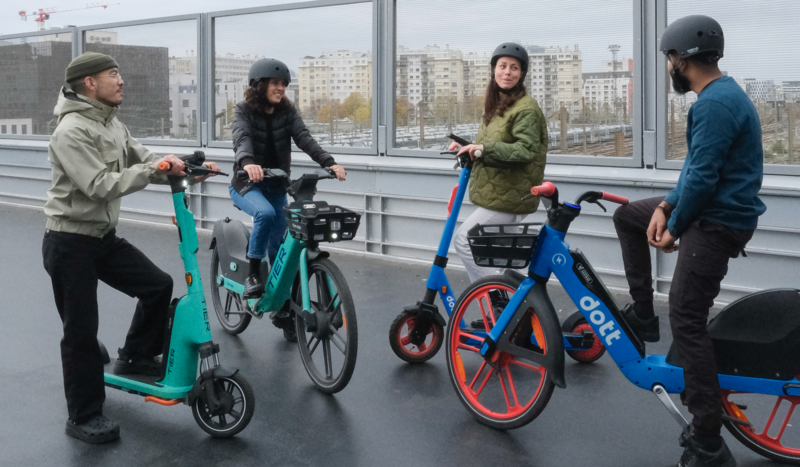Understanding the Multi-Faceted Benefits of Bike Sharing Programs on a Global Scale
Introduction
Bike sharing programs have gained popularity worldwide, transforming urban transportation systems by offering an accessible, sustainable, and healthy alternative to traditional modes of transport. This blog post delves into the research surrounding the environmental and economic benefits of bike sharing programs, presenting compelling evidence to support their continued expansion and development.
- CO2 Emission Reduction: Quantifying the Impact
Bike sharing programs have a significant potential to reduce CO2 emissions in urban areas. According to a study published in the journal Environmental Research Letters, a comprehensive bike sharing system in Barcelona was estimated to have reduced CO2 emissions by over 9,000 metric tons annually (1). Another study conducted by the Transportation Research Board indicated that Washington D.C.’s Capital Bikeshare program led to an annual reduction of 487 metric tons of CO2 emissions (2). These findings underscore the importance of bike sharing programs in reducing greenhouse gas emissions and combatting climate change.
- Air Quality Improvement: Cleaner Air for All
Research has demonstrated that bike sharing programs can also contribute to improved air quality in urban areas. A study conducted in 53 Chinese cities found that bike sharing programs were associated with a 4.4% reduction in particulate matter (PM2.5) concentrations, which are harmful to human health (3). By reducing traffic congestion and encouraging a shift towards eco-friendly transportation options, bike sharing can play a vital role in creating cleaner and healthier urban environments.
- Economic Benefits: An Investment Worth Making
Bike sharing programs have been found to generate substantial economic benefits for cities, both directly and indirectly. A report by the National Association of City Transportation Officials (NACTO) revealed that bike sharing programs in the United States created over 3,500 jobs between 2010 and 2016 (4). Furthermore, a study by the University of California, Berkeley, estimated that bike sharing programs in the San Francisco Bay Area generated approximately $2.6 million in net economic benefits annually (5). These figures demonstrate the potential for bike sharing programs to promote local economic growth and create valuable job opportunities.
- Supporting Local Businesses: Cycling Towards Prosperity
Research has consistently shown that bike sharing programs can boost local businesses by increasing foot traffic and encouraging more frequent stops. A study conducted in Portland, Oregon, found that customers arriving by bike spent 24% more per month at local businesses than those arriving by car (6). Similarly, a survey of bike share users in Melbourne, Australia, revealed that 65% of respondents reported increased spending at businesses near bike share stations (7). These findings indicate that bike sharing programs can have a positive impact on local economies and support small businesses in urban areas.
Conclusion
The research supporting the environmental and economic benefits of bike sharing programs is both extensive and compelling. From reducing CO2 emissions and improving air quality to promoting economic growth and supporting local businesses, the advantages of bike sharing programs are multifaceted and far-reaching. By continuing to invest in and develop bike sharing programs, communities around the world can make significant strides towards a more sustainable, prosperous, and healthy future.
References:
(1) Rojas-Rueda, D., et al. (2011). The health risks and benefits of cycling in urban environments compared with car use: Health impact assessment study. Environmental Research Letters, 6(4), 044073. (2) Fishman, E., & Schepers, P. (2016). Global bike share: What the data tells us about road safety. Journal of Safety Research, 56, 41-45. (3) Xu, Y., et al. (2020). Impact of dockless bikeshare on mode change and greenhouse gas emissions: A longitudinal study from 53 Chinese cities. Journal of Cleaner Production, 256, 120274. (4) National Association of City Transportation Officials (NACTO). (2017). Bike Share in the U.S.: 2010-2016. Retrieved from https://nacto.org/bike-share-statistics-2016/ (5) Shaheen, S., Guzman, S., & Zhang, H. (2010). Bikesharing in Europe, the Americas, and Asia: Past, Present, and Future. Transportation Research Record, 2143(1), 159-167. (6) Clifton, K. J., et al. (2012). Consumer Behavior and Travel Choices: A Focus on Cyclists and Pedestrians. National Institute for Transportation and Communities. Retrieved from https://nitc.trec.pdx.edu/research/project/493 (7) Fishman, E., Washington, S., & Haworth, N. (2014). Bike share's impact on car use: Evidence from the United States, Great Britain, and Australia. Transportation Research Part D: Transport and Environment, 31, 13-20.




